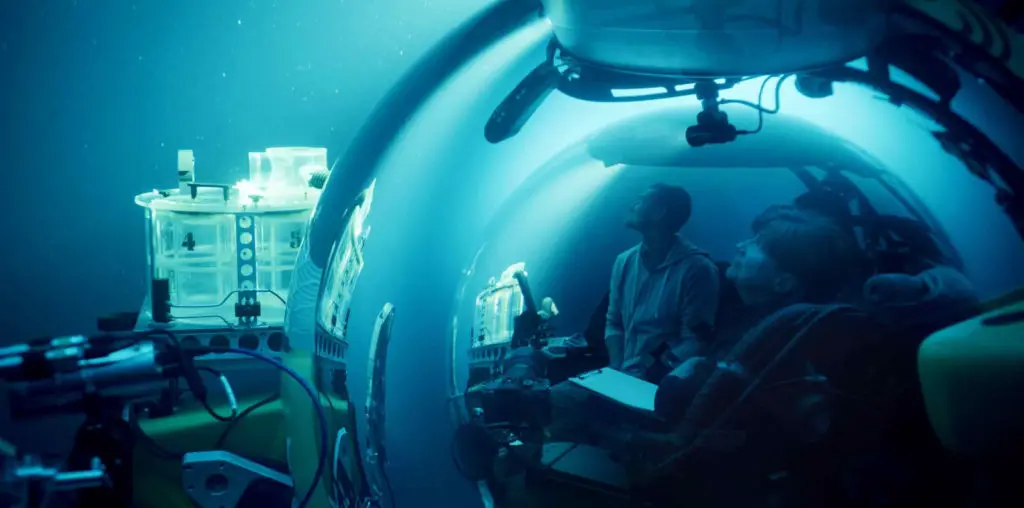
It’s depressing to think about, but a lot of the people in the modern environmental movement function as nothing more than the marketing arm for the alternative energy industry. Years ago they were staging die-ins at local nuclear power plants or painting themselves day-glo green and gurgling like mutants in front of the NRC’s offices. Today, some of these same people are actually promoting nuclear power as a solution to CO2 and global warming.
For a kid who grew up in the ’80s and who remembers Chernobyl and Three Mile Island with an almost living sense of dread, this blows my mind. Environmentalists who support nuclear power are like Black Klansmen or Jewish Nazis. I just cannot wrap my head around the twisted ideological politics that led to this collaboration.
Of all the things we have ever produced in all the history of all mankind, nuclear waste is both the most toxic to life and the longest lasting, a fact that the haunting documentary “Into Eternity”, about the construction of Finland’s Onkalo nuclear waste repository, states in its first few minutes. It then goes on to say that our poisonous nuclear garbage will last 100,000 years which is ten times the length of all modern human history and half the length that our entire species of Homo Sapiens has existed on Earth. Nothing we have made has lasted this long, and the odds are good that it will outlive everything existing today and for many thousands of years to come. This will be our ultimate “gift” to our descendants.
Let me point something else out, and add a few statistics of my own, because I feel it’s relevant to this review. The film says that Finland has between 200,000 and 300,000 tons of nuclear waste. True enough, but the world produces 12,000 tons per year of the stuff and some of it is going to be radioactive and hot for the next 17 million years. We’re talking about waste so toxic that it needs to be shielded at all times. Sometimes it also has to be cooled to make sure it doesn’t burn straight through the planet. Standing anywhere near it will make you horribly sick. Touching it will kill you. The BP oil spill, by comparison, may have dumped a few million barrels of oil into the sea, but that oil is biodegradable. It is, after all, the remnants of organic matter. Yes, it indiscriminately murdered marine life, poisoned the water, and caused all sorts of criminally stupid devastation, but it’ll go away. In fifty years or so, tops, it’ll be impossible to tell there’d been a spill in the first place.
Nuclear waste, on the other hand, will be a problem for as long as human beings will ever walk the Earth. Not just that, but most of it is stored in above ground tanks that are just one unexpected catastrophe away from making September 11 look like a particularly rowdy World Series after party. So it quickly becomes obvious we can’t just leave it sitting there. We have to do something with it, but what?
Dumping it in the ocean has been proposed. Surprisingly it’s not as dumb as it sounds. Water is a good radiation shield, and we have deep oceans, but I think BP is doing a fine job with aquatic genocide.
Loading it onto a rocket and shooting it into outer space may sound a whole lot better in theory, but it’s actually worse if you think about it for a minute. First, you’d need thousands of rocket launches to get rid of it all, increasing the risk of something going wrong by about 99.9 percent. Second, imagine a rocket filled with this stuff exploding in midair and covering the Earth with cancerous dust. The world would be wishing it had picked the option that only resulted in an ocean full of dead whales if that happened.
This leaves us with a single realistic option, to bury it so deep in rock so solid that no war, earthquake, ice age, or any other calamity will affect it. Deeper than any groundwater, deeper than arable soil, deeper than anything that we will ever touch or can touch us. To bury it in the dead of night, with a guilty conscience as sole witness, like a murderer and his victim.
Unsurprisingly, that’s exactly what Finland is doing. They began digging the Onkalo nuclear waste repository in 2004 and will seal it for all eternity after it’s full in 2150. Though I really hope nobody in the future decides to go mining there, and knowing that it’s only a bit less than mile underground doesn’t inspire a whole lot of confidence in me.
“Into Eternity” uses the concept of burying something that lasts almost forever to pose the fascinating question “What will the world be like in 100,000 years?” and in the process the film transforms itself from a documentary about nuclear disposal into a science-fiction movie taking place in the present. I mean, think about how long 100,000 years really is. Will humans still be around? What will they be like? Will they be more advanced, or less? Will they even still be recognizable as human? The documentary asks the architects of Onkalo their opinion about the subject, and they give answers that are both fascinating and terrifying in equal measure.
Arthur C. Clarke wrote a book in 1985 called “July 20th, 2019” about his own predictions for the future, and he got pretty much everything wrong. Here is a man who spent a lifetime imagining the future, but even he couldn’t predict just 34 years ahead, less than half a human lifetime. So how can anyone say they’ll accurately guess that everything will go smoothly for the next 1333 lifetimes?
To their credit, the scientists and politicians are no fools. The Finns are nothing if not honest and pragmatic. They know all too well that they don’t know anything. However, they have little choice. What else are they going to do with it? Which brings up the scary question of what the hell are we doing with ours?
This is a haunting documentary. I think children today don’t hear enough about the dangers of nuclear power. As a kid I used to be terrified about nukes, today too many people have forgotten that fear. It would do us well to remember it instead of spending so much time worrying about smaller, more benign, concerns like global warming, superflu epidemics and terrorist attacks.
“Into Eternity” was part of the 2010 Fantasia Film Festival’s “Documentaries from the Edge” lineup.

